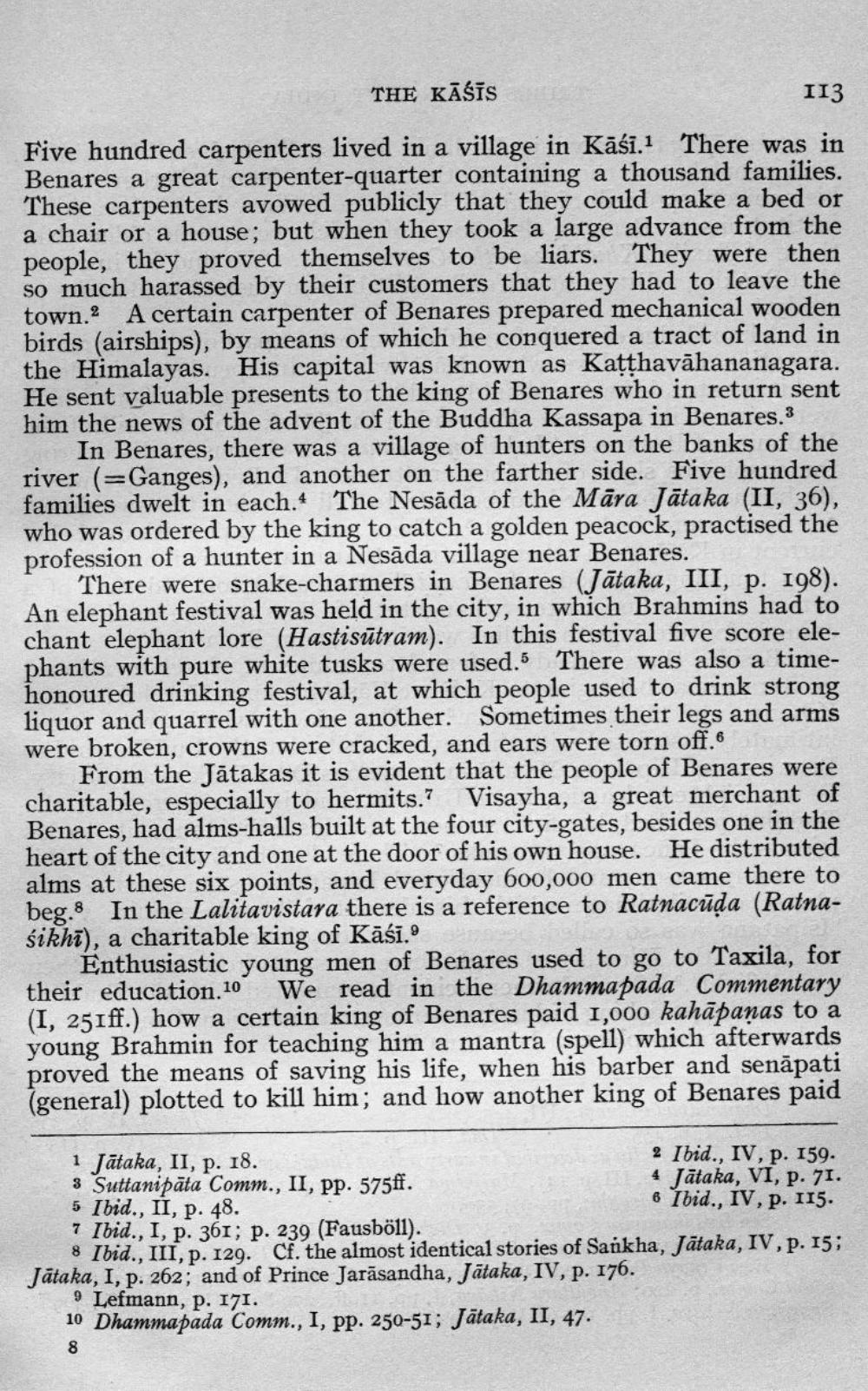________________
THE KĀŚĪS
113
Five hundred carpenters lived in a village in Kāśi. There was in Benares a great carpenter-quarter containing a thousand families. These carpenters avowed publicly that they could make a bed or a chair or a house; but when they took a large advance from the people, they proved themselves to be liars. They were then so much harassed by their customers that they had to leave the town.2 A certain carpenter of Benares prepared mechanical wooden birds (airships), by means of which he conquered a tract of land in the Himalayas. His capital was known as Katthavāhananagara. He sent valuable presents to the king of Benares who in return sent him the news of the advent of the Buddha Kassapa in Benares. 3
In Benares, there was a village of hunters on the banks of the river (=Ganges), and another on the farther side. Five hundred families dwelt in each.4 The Nesāda of the Māra Jātaka (II, 36), who was ordered by the king to catch a golden peacock, practised the profession of a hunter in a Nesāda village near Benares.
There were snake-charmers in Benares (Jātaka, III, p. 198). An elephant festival was held in the city, in which Brahmins had to chant elephant lore (Hastisūtram). In this festival five score elephants with pure white tusks were used. There was also a timehonoured drinking festival, at which people used to drink strong liquor and quarrel with one another. Sometimes their legs and arms were broken, crowns were cracked, and ears were torn off.6
From the Jātakas it is evident that the people of Benares were charitable, especially to hermits. Visayha, a great merchant of Benares, had alms-halls built at the four city-gates, besides one in the heart of the city and one at the door of his own house. He distributed alms at these six points, and everyday 600,000 men came there to beg.: In the Lalitavistara there is a reference to Ratnacūda (Ratnaśikhi), a charitable king of Kāśi.
Enthusiastic young men of Benares used to go to Taxila, for their education.10 We read in the Dhammapada Commentary (I, 251ff.) how a certain king of Benares paid 1,000 kahāpanas to a young Brahmin for teaching him a mantra (spell) which afterwards proved the means of saving his life, when his barber and senāpati (general) plotted to kill him, and how another king of Benares paid
1 Jataka, II, p. 18.
2 Ibid., IV, p. 159. 3 Suttanipāta Comm., II, pp. 575ff.
4 Jätaka, VI, p. 71. 5 Ibid., II, p. 48.
6 Ibid., IV, p. 115. 7 Ibid., 1, p. 361; p. 239 (Fausböll).
8 Ibid., III, p. 129. cf. the almost identical stories of Sankha, Jātaka, IV, p. 15; Jātaka, I, p. 262; and of Prince Jarāsandha, Jātaka, IV, p. 176.
9 Lefmann, p. 171. 10 Dhammapada Comm., I, pp. 250-51; Jātaka, II, 47.




